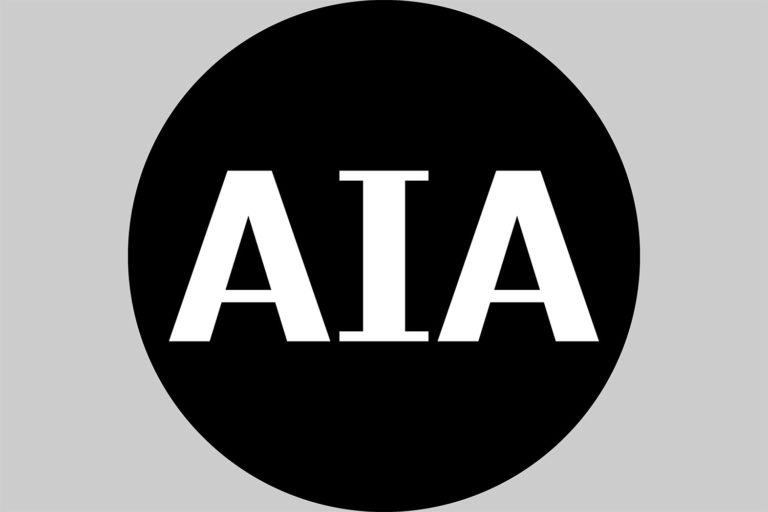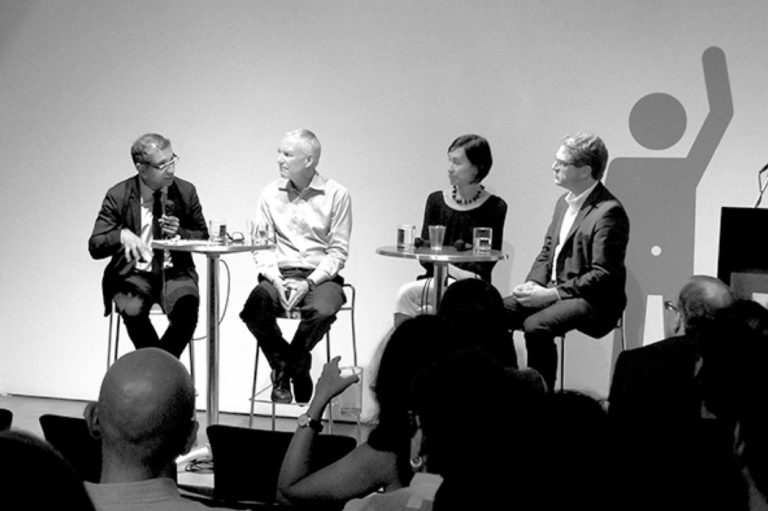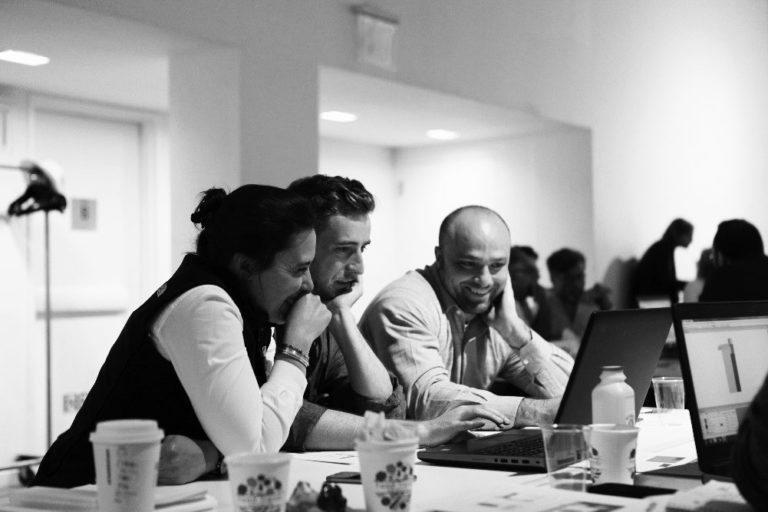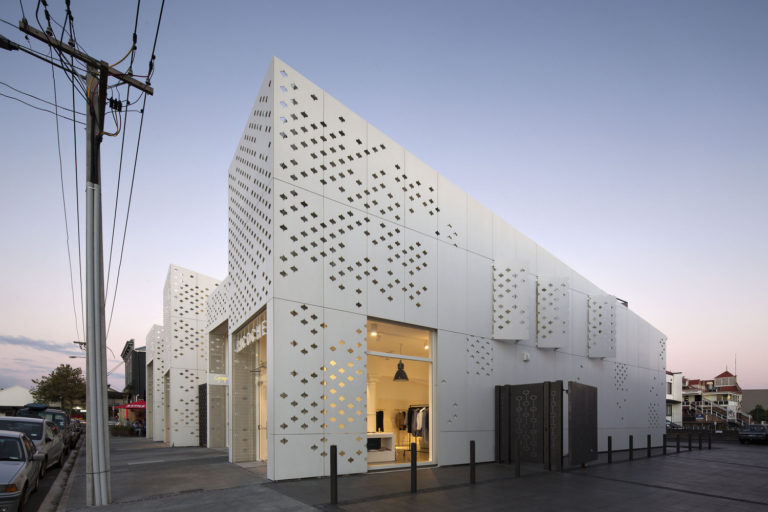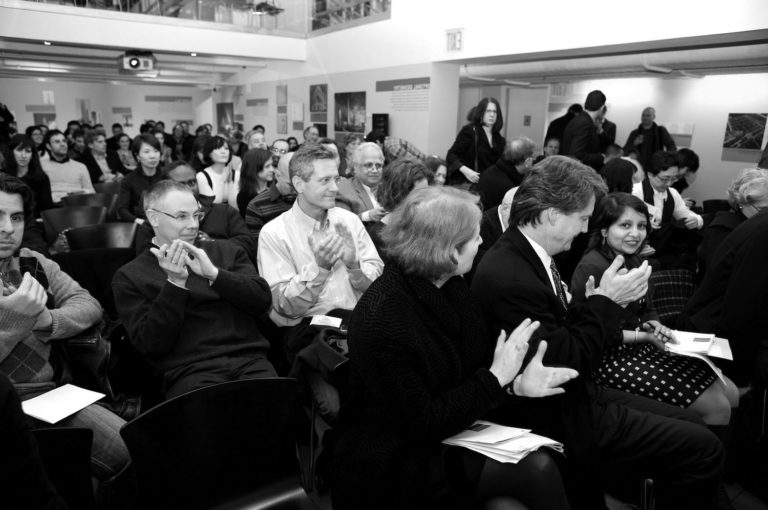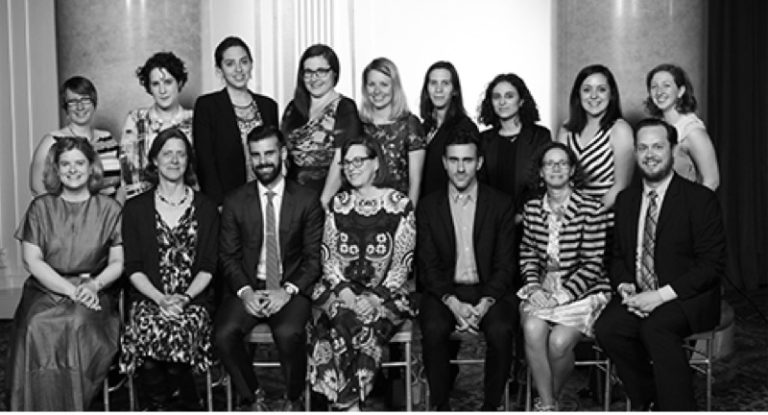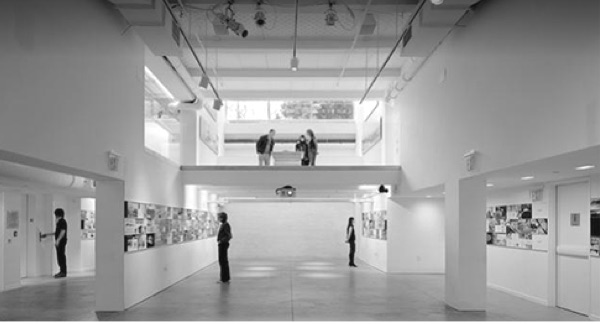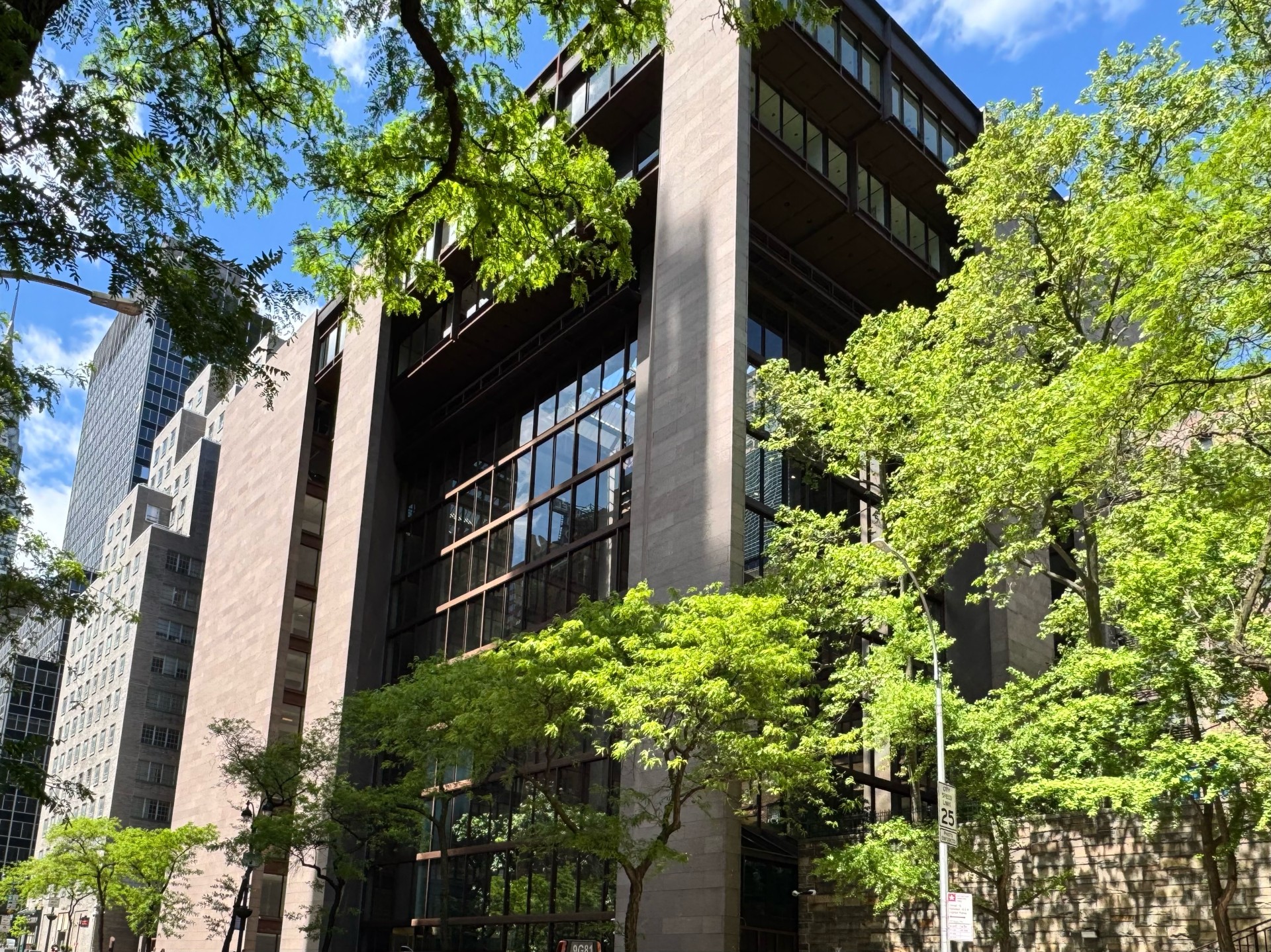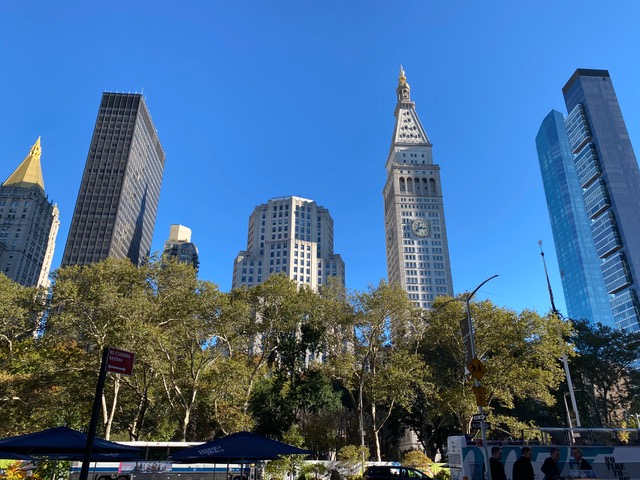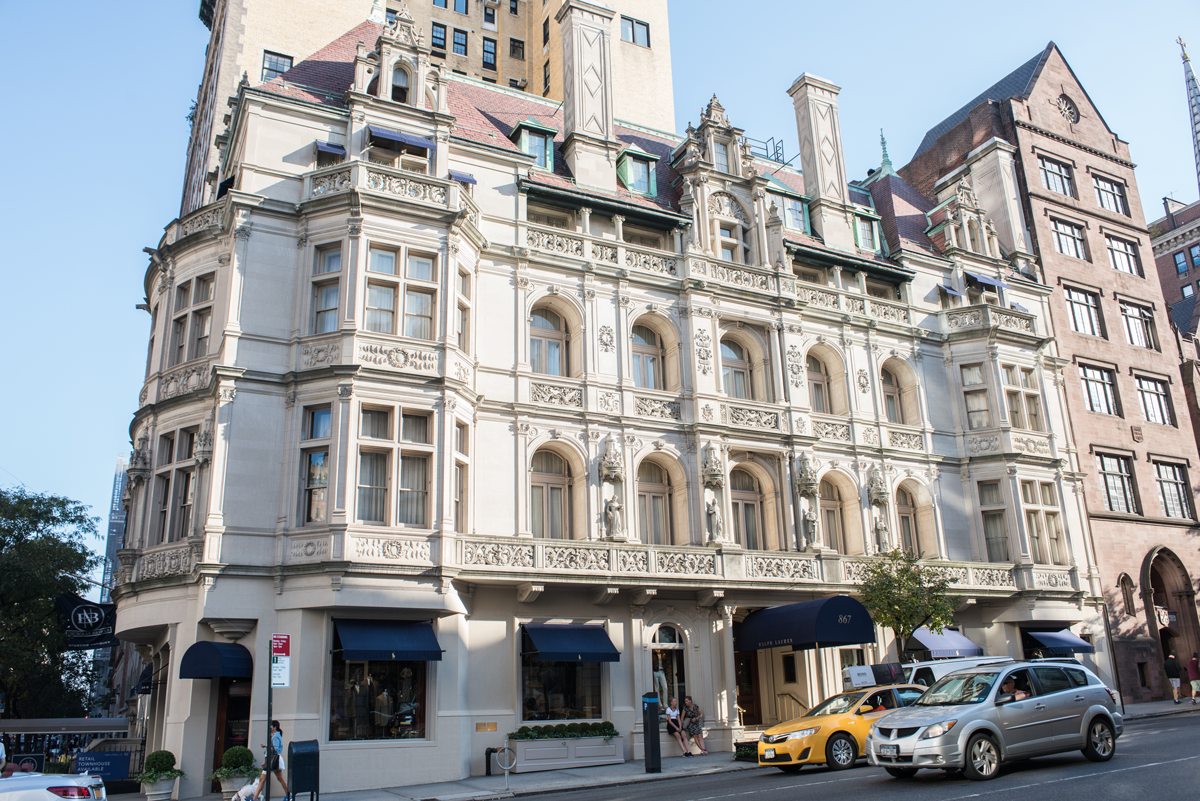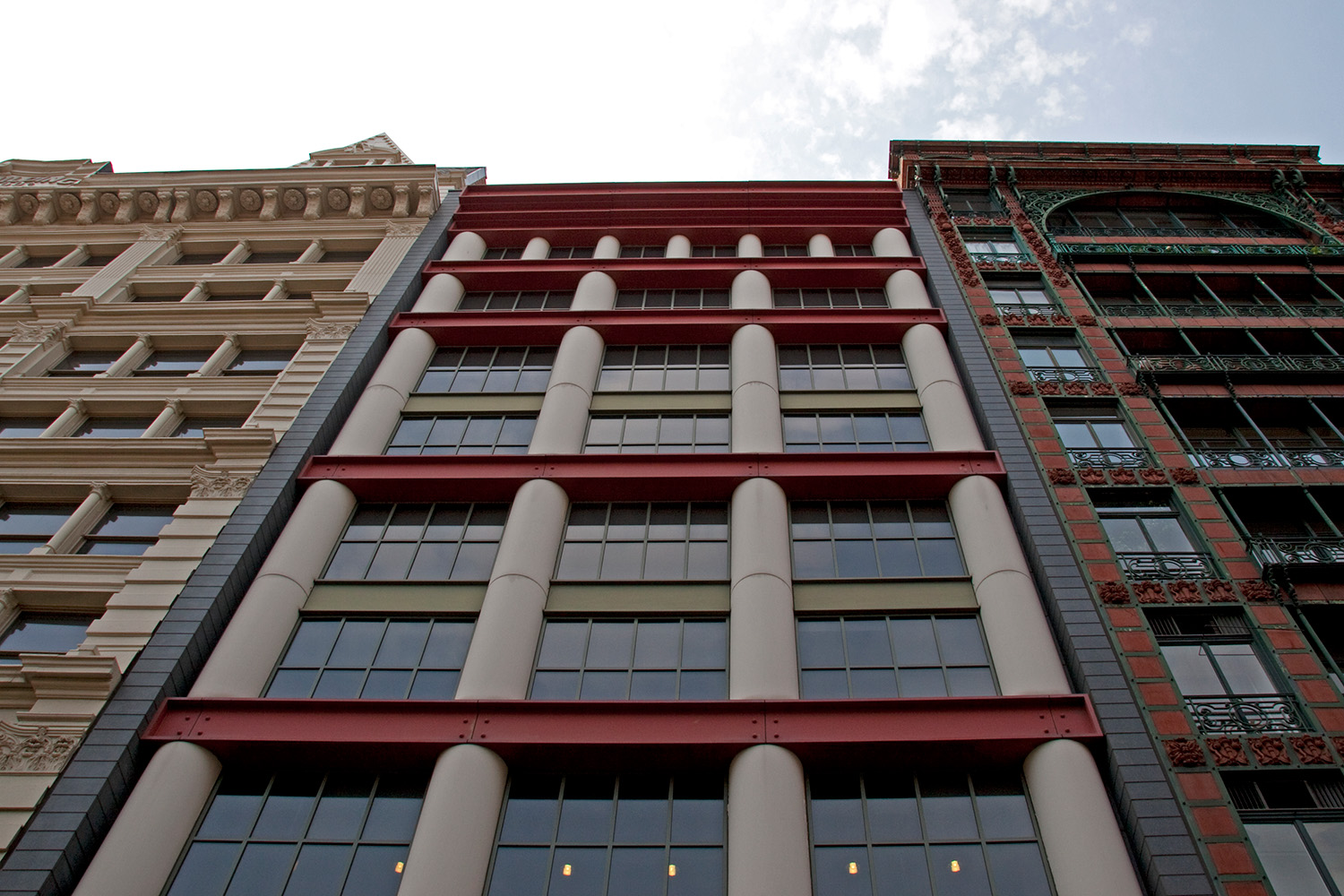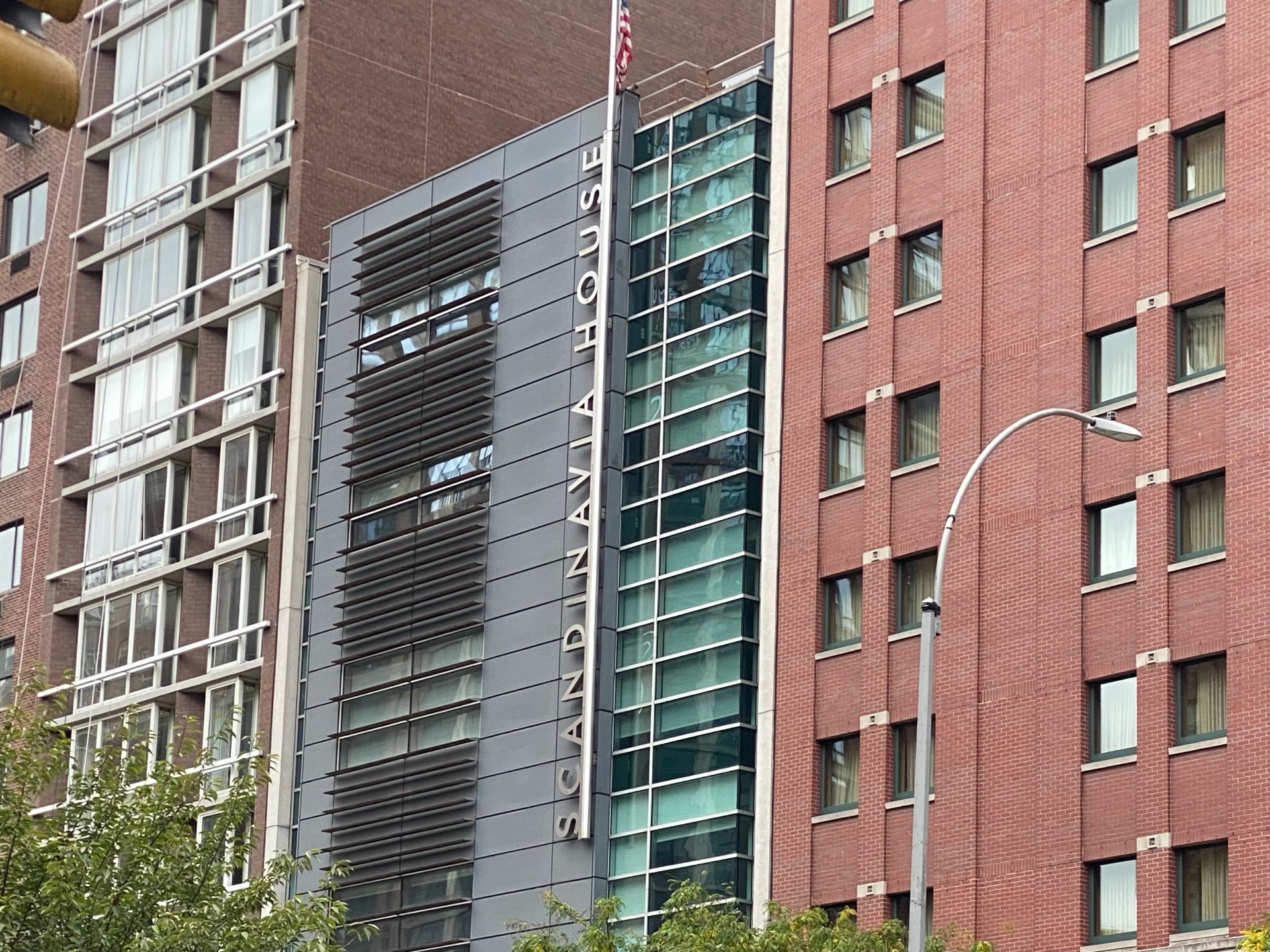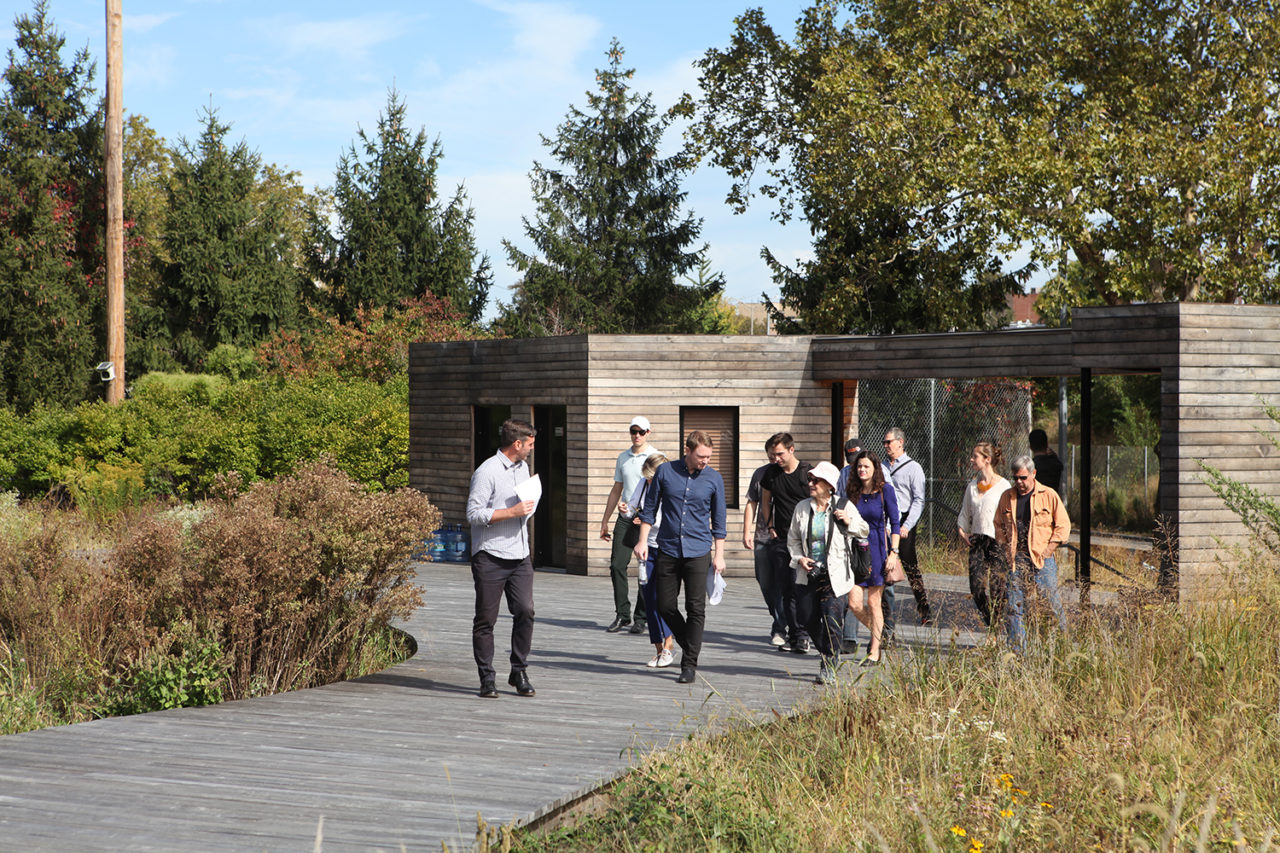
AIA New York organizes several different walking tours throughout Manhattan and the boroughs, with a special focus on modern and contemporary architecture. Expert guides, all members of AIA New York, walk intimate groups of visitors through some of New York City’s most distinctive neighborhoods, exploring the city’s rich history and stunning new buildings, as well as creative examples of adaptive reuse, urban planning, and development.
Questions? Email tours@aiany.org.
Upcoming Walking Tours
Walking Tour: The Architecture of East 42nd Street
In-Person- AIANY Member: $25
Meet at 42nd Street Entrance to the Ford Foundation. Please arrive 15 minutes prior to tour start time.
There was a time when this seven block long stretch of East 42nd Street from the East River to Grand Central Terminal was seen as the undesirable back door of Midtown Manhattan. Slaughterhouses lined the banks of the East River, and an assortment of manufacturing and industrial uses continued west along this major artery. With the establishment of three large scale projects in the 1930’s—Tudor City, the Daily News, and the Chrysler Building—stepping stones were created for further development. By 1954 two clearly established anchors were in place: the United Nations on the East River and Grand Central at Park Avenue. The Ford Foundation then followed in 1967. With recent new development, including the towering One Vanderbilt office tower and the cavernous construction of Grand Central Madison, the history of this famous street continues to unfold.
AIANY Guide: Joseph Lengeling, AIA
—
Health and Safety Guidelines:
AIANY cannot be held liable and assumes no responsibility for any injury or loss incurred by participants in these programs. A personal audio system will be in use for this tour. The tour is limited to 17 attendees. To insure each guest will receive a device, please arrive promptly 15 minutes prior to the start time. Walkups cannot be guaranteed a spot on the tour.
Cancellation Policy:
AIANY Walking Tours take place rain or shine. Please dress for the weather. There are no refunds, cancellations, or exchanges, unless we cancel a tour.
Walking Tour: The Architecture of Madison Square Park
In-Person- General Public: $30
Meet at west entrance to the park at 24th Street and Broadway in front of the WWI memorial and flagpole. Please arrive 15 minutes before the start of the tour.
As the city moved rapidly northward in the 18th century, a series of small parks were established, anchoring neighborhoods such as Washington Square, Union Square, Madison Square, and Bryant Park.
In 1847, Madison Square Park (named for the fourth U.S. President, James Madison) was established as a residential neighborhood but quickly became a center for larger commercial and entertainment buildings. Today, it boasts a lively mix of insurance, finance, design, and residential uses. The park lays claim to home of the original Madison Square Garden, the founding of baseball, and the very first Shake Shack.
Early skyscrapers like the Flatiron Building, Metropolitan Life, and the NY Life Building will be discussed, as well as the architectural legacies of Stanford White, Daniel Burnham, Napoleon LeBrun, and Cass Gilbert.
Guide: Joseph Lengeling, AIA
Health and Safety Guidelines:
AIANY cannot be held liable and assumes no responsibility for any injury or loss incurred by participants in these programs. Tour is limited to 15 attendees. A personal audio system will be in use for this tour. To insure each guest will receive a device, please arrive promptly 15 minutes prior to the start time. Walkups cannot be guaranteed a spot on the tour.
Cancellation Policy:
AIANY Walking Tours take place rain or shine, please dress for the weather. There are no refunds, cancellations, or exchanges, unless we cancel a tour.
Walking Tour: Madison Avenue, High Fashion, and Historic Preservation
In-Person- General Public: $30
Meet at the Madison Avenue BID offices: 29 East 61 Street, Third Floor, New York, NY 10065
Join AIANY and the Madison Avenue BID as we set out to discover the history behind Madison Avenue’s landmark buildings and explore how high-fashion retail has been incorporated into the district to create a world-famous shopping destination. The area has evolved from brownstones built in the 1870s and 1880s to lavish Beaux Arts townhouses by celebrated architects such as McKim, Mead & White, Carrère & Hastings, and Ernest Flagg, to luxury apartment buildings designed by Rosario Candela, Emery Roth, and others. Since the early 20th century, many of these historic residential buildings have been transformed to accommodate prestigious stores. The tour will examine architecture from 1870 to the present on and near Madison in the East 60s and 70s, an area entirely within the Upper East Side Historic District. We will consider how landmark designation has preserved the avenue’s distinctive character.
This monthly tour is offered in partnership with the Madison Avenue Business Improvement District (BID), a public-private partnership established in 1996 with the goal of enhancing the quality of life for the community and its visitors. The BID focuses on public safety, sanitation, promotion and advocacy for the district, striving to make Madison Avenue a more attractive and dynamic place in which to shop, live, work and visit.
AIANY Guide: John Arbuckle, Assoc. AIA
—
Health and Safety Guidelines:
AIANY cannot be held liable and assumes no responsibility for any injury or loss incurred by participants in these programs. Tour is limited to 17 attendees. Walkups cannot be guaranteed a spot on the tour.
Cancellation Policy:
AIANY Walking Tours take place rain or shine, please dress for the weather. There are no refunds, cancellations, or exchanges, unless we cancel a tour.
Walking Tour: The Architecture of East 42nd Street
In-Person- AIANY Member: $25
Meet at 42nd Street Entrance to the Ford Foundation. Please arrive 15 minutes prior to tour start time.
There was a time when this seven block long stretch of East 42nd Street from the East River to Grand Central Terminal was seen as the undesirable back door of Midtown Manhattan. Slaughterhouses lined the banks of the East River, and an assortment of manufacturing and industrial uses continued west along this major artery. With the establishment of three large scale projects in the 1930’s—Tudor City, the Daily News, and the Chrysler Building—stepping stones were created for further development. By 1954 two clearly established anchors were in place: the United Nations on the East River and Grand Central at Park Avenue. The Ford Foundation then followed in 1967. With recent new development, including the towering One Vanderbilt office tower and the cavernous construction of Grand Central Madison, the history of this famous street continues to unfold.
AIANY Guide: Joseph Lengeling, AIA
—
Health and Safety Guidelines:
AIANY cannot be held liable and assumes no responsibility for any injury or loss incurred by participants in these programs. A personal audio system will be in use for this tour. The tour is limited to 17 attendees. To insure each guest will receive a device, please arrive promptly 15 minutes prior to the start time. Walkups cannot be guaranteed a spot on the tour.
Cancellation Policy:
AIANY Walking Tours take place rain or shine. Please dress for the weather. There are no refunds, cancellations, or exchanges, unless we cancel a tour.
Walking Tour: The Architecture of Bryant Park
In-Person- General Public: $30
Meet at NE Corner of Fifth Avenue and East 40th Street under the canopy. Please arrive 15 minutes before the start of the tour.
Before Bryant Park became New York’s “Living Room” and home to the New York Public Library, this open space served as a potter’s field, a reservoir for the Croton Water System, and the site of the Crystal Palace Exhibition. During the Great Depression, Robert Moses implemented a sweeping new landscape plan. Following a decline in the social and physical conditions in the 1970’s the park underwent a major transformation completed in 1990 designed by Hanna/Olin. Today, Bryant Park, one of the premier outdoor spaces of Manhattan, serves as a model for public and private revitalization. This walking tour will explore the architecture lining the perimeter of the park which offers a timeline of the development of Midtown. Key projects include the New York Public Library by Carrère and Hastings, the Radiator Building by Howells and Hood, One Bryant Park by Cook + Fox, the Grace Building by SOM, and Bryant Condominiums and Hotel by David Chipperfield. Urban and architectural issues will be discussed, including NYC zoning law, business improvements districts, and the evolution of skyscraper design.
AIANY Guide: Joseph Lengeling, AIA
—
AIANY cannot be held liable and assumes no responsibility for any injury or loss incurred by participants in these programs. Tour is limited to 15 attendees. A personal audio system will be in use for this tour. To insure each guest will receive a device, please arrive promptly 15 minutes prior to the start time. Walkups cannot be guaranteed a spot on the tour.
Cancellation Policy:
AIANY Walking Tours take place rain or shine, please dress for the weather. There are no refunds, cancellations, or exchanges, unless we cancel a tour.
Walking Tour: Historic Buildings and New Interventions in SoHo
In-Person- General Public: $30
Meet at the Center for Architecture, 536 LaGuardia Pl New York, NY 10012
The SoHo-Cast Iron Historic District, created in 1973, is dominated by remarkably intact mid-19th century architecture. Originally designed for both commercial and manufacturing uses, most of these buildings have been adapted for residential use. Meanwhile, over the last three decades, several entirely new buildings have been approved by the NYC Landmarks Preservation Commission as “appropriate" for inclusion within the district.
This tour looks at these recent buildings as well as significant historic sites to examine a range of design strategies—some highly contextual and others more interpretive—for historic districts. The following buildings are included, among many others: Scholastic Building by Aldo Rossi, 40 Mercer by Jean Nouvel, 529 Broadway by BKSK, 27 Wooster by KPF, XOCO 325 by DDG, the 1857 Haughwout Building, the meticulously restored 101 Spring Street (Judd Foundation), 478-482 Broadway by Richard Morris Hunt, and the 1904 Little Singer Building by Ernest Flagg.
AIANY Guide: Tim Hayduk
Health and Safety Guidelines:
AIANY cannot be held liable and assumes no responsibility for any injury or loss incurred by participants in these programs. Tour is limited to 17 attendees. Walkups cannot be guaranteed a spot on the tour.
Cancellation Policy:
AIANY Walking Tours take place rain or shine, please dress for the weather. There are no refunds, cancellations, or exchanges, unless we cancel a tour.
Walking Tour: The Architecture of Park Avenue South
In-Person- AIANY Member: $25
Meet at SW Corner of 42nd Street and Park Avenue inside the atrium of the Philip Morris Building; 15 minutes prior to start of tour.. Please arrive 15 minutes prior to tour start time.
Park Avenue, below Grand Central Terminal, and Park Avenue South (formerly Fourth Avenue) pass through the historic neighborhoods of Murray Hill and Rose Hill and the more recently named Flatiron and NoMad districts. Once the insurance row of Manhattan, today these neighborhoods feature a lively mix of commercial, residential, and institutional uses, including transformed Class B office buildings and recent ground-up additions.
Within this corridor lies an encyclopedia of the architecture of New York City. Charles Follen McKim, Stanford White, and Horace Trumbauer prominently represent the 19th Century, while projects by Cass Gilbert, Ely Jacques Kahn, and Harvey Wiley Corbett usher in the first forty years of the 20th Century. Contemporary work by Ennead Architects, Michael Graves, Renzo Piano, Pelli Clarke Pelli, Christian de Portzamparc, and Gwathmey Siegel are also highlighted on the avenues and adjacent blocks.
This tour examines urban design and architectural issues in Park Avenue South, including NYC zoning, the Manhattan grid, POPS bonus plazas, Class A and Class B office buildings, and façade organizing principles.
AIANY Guide: Joseph Lengeling, AIA
—
Health and Safety Guidelines:
AIANY cannot be held liable and assumes no responsibility for any injury or loss incurred by participants in these programs. The tour is limited to 17 attendees. Walkups cannot be guaranteed a spot on the tour.
Cancellation Policy:
AIANY Walking Tours take place rain or shine. Please dress for the weather. There are no refunds, cancellations, or exchanges, unless we cancel a tour.
Policies
AIANY Walking tours take place rain or shine, please dress for the weather. There are no refunds, cancellations, or exchanges, unless we cancel a tour.
Accessibility
Please note that AIANY walking tours are not ADA accessible. However, since accessibility requirements can vary from person to person, please email tours@aiany.org prior to purchasing your tickets for more information.
